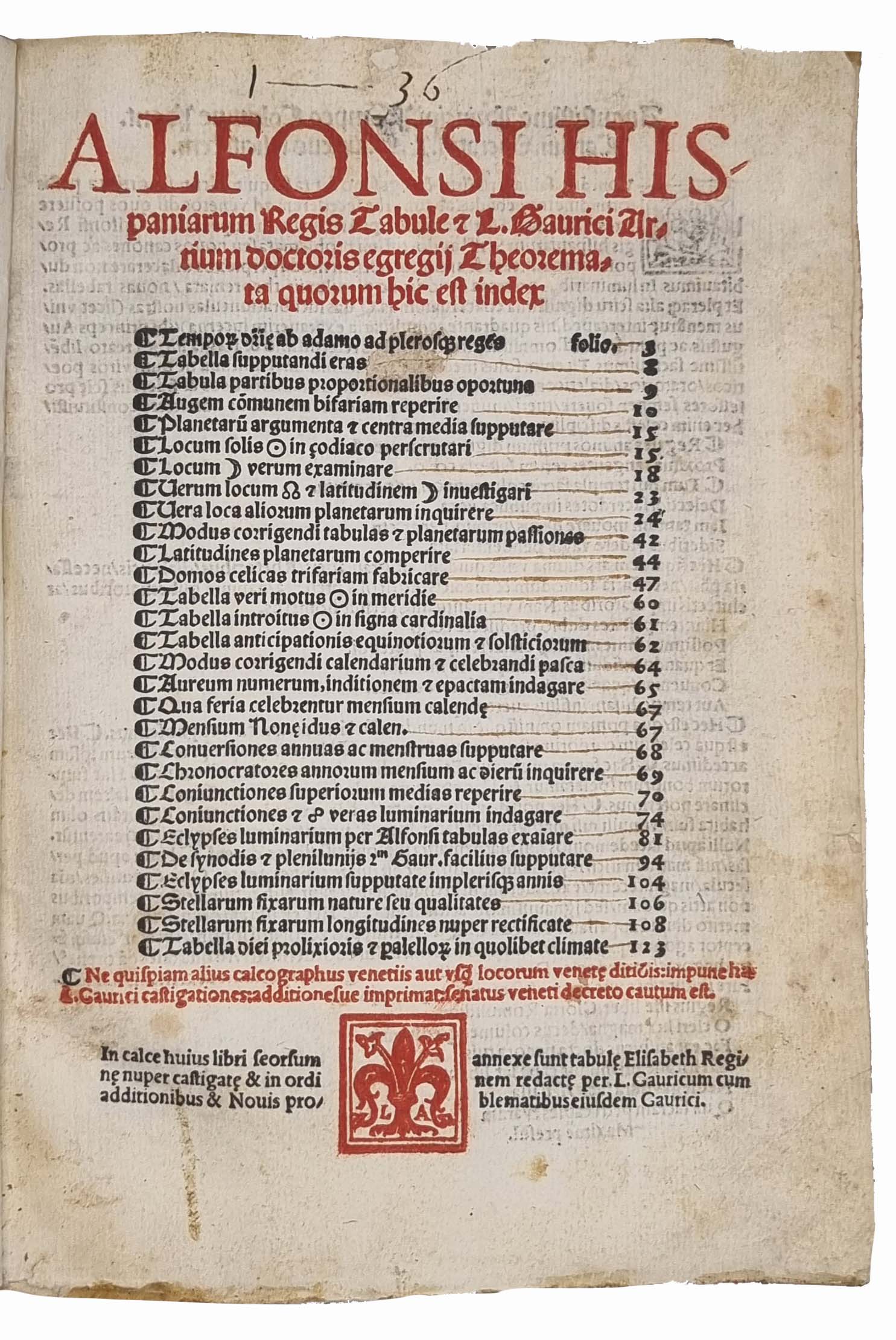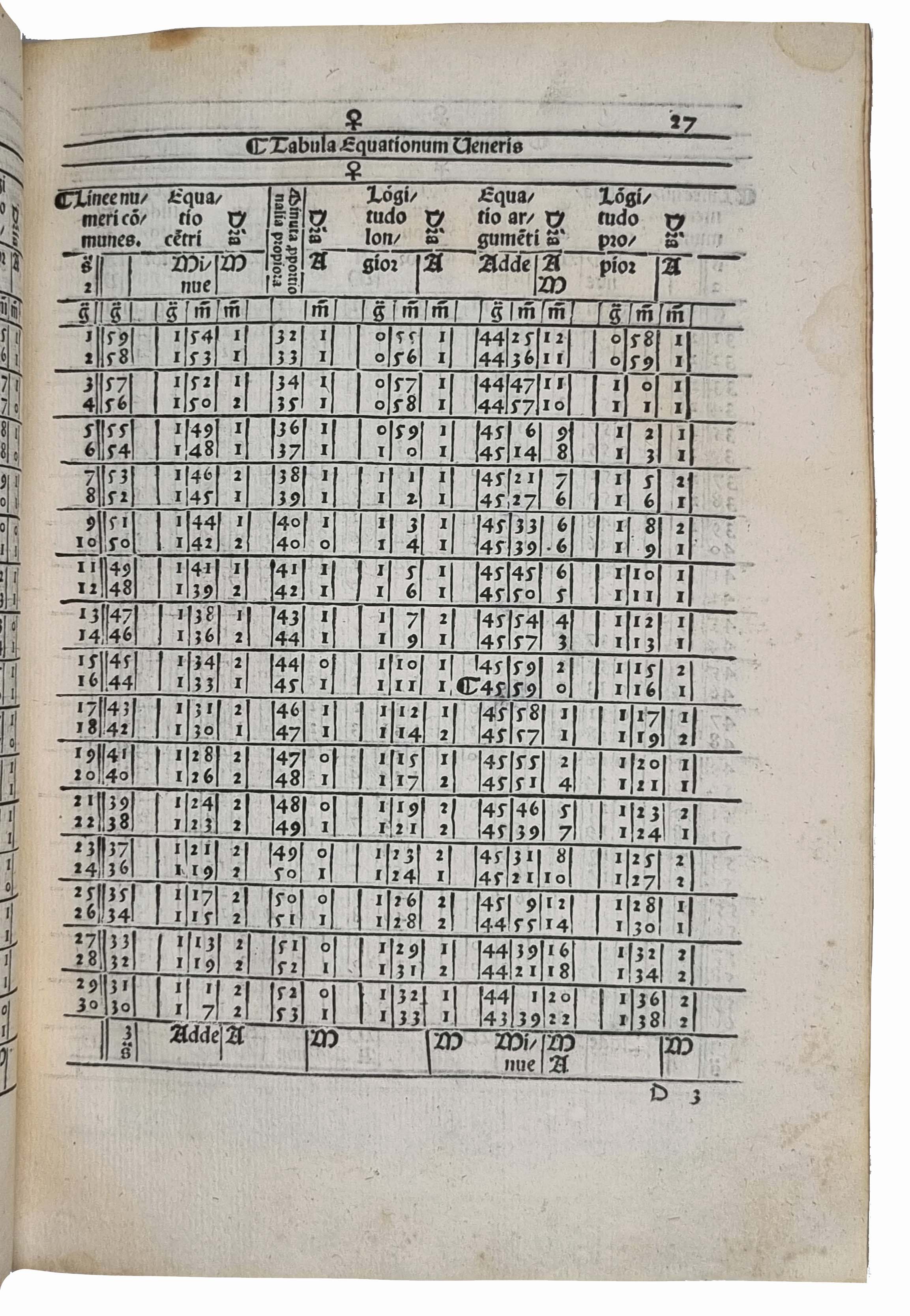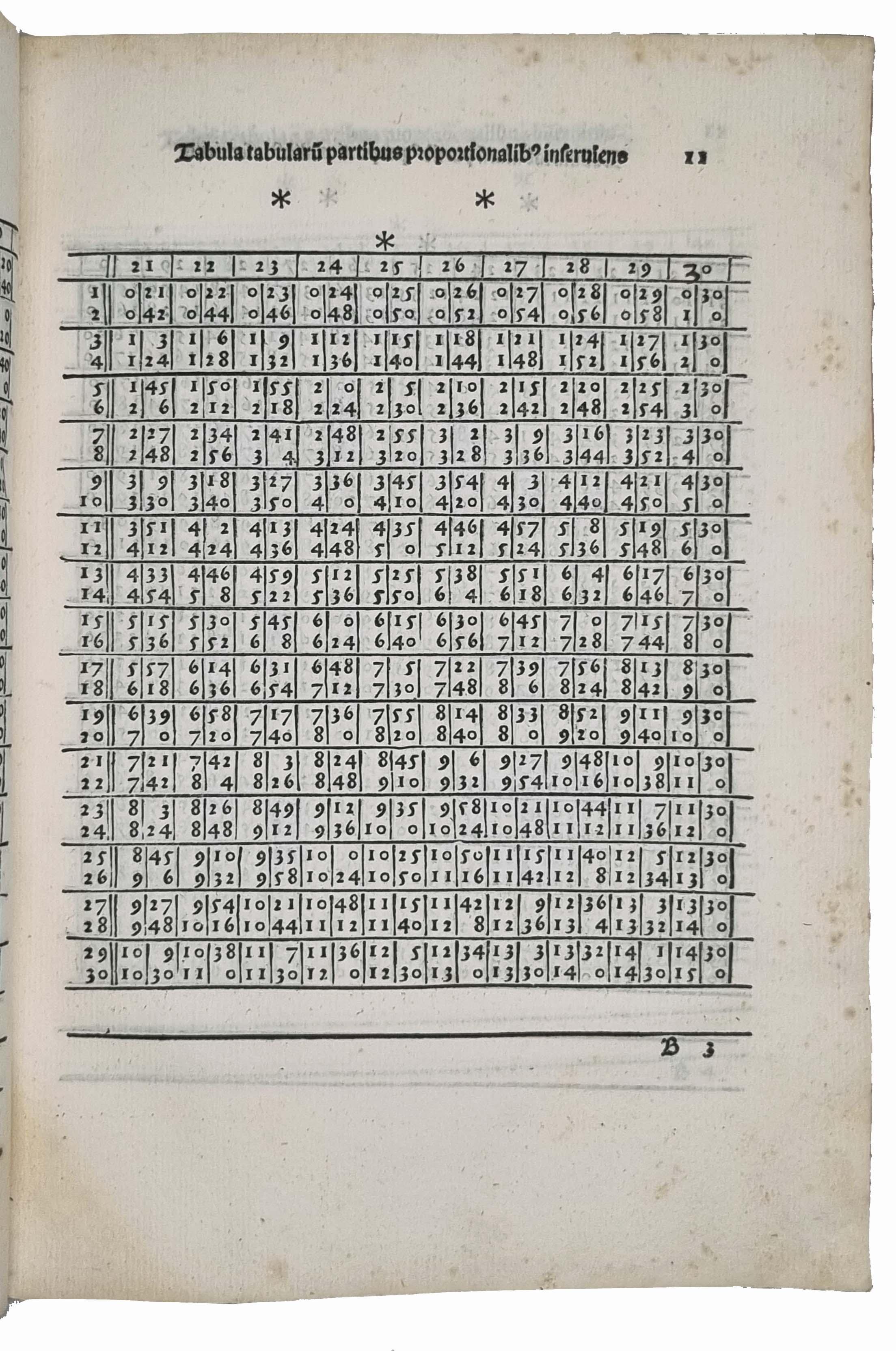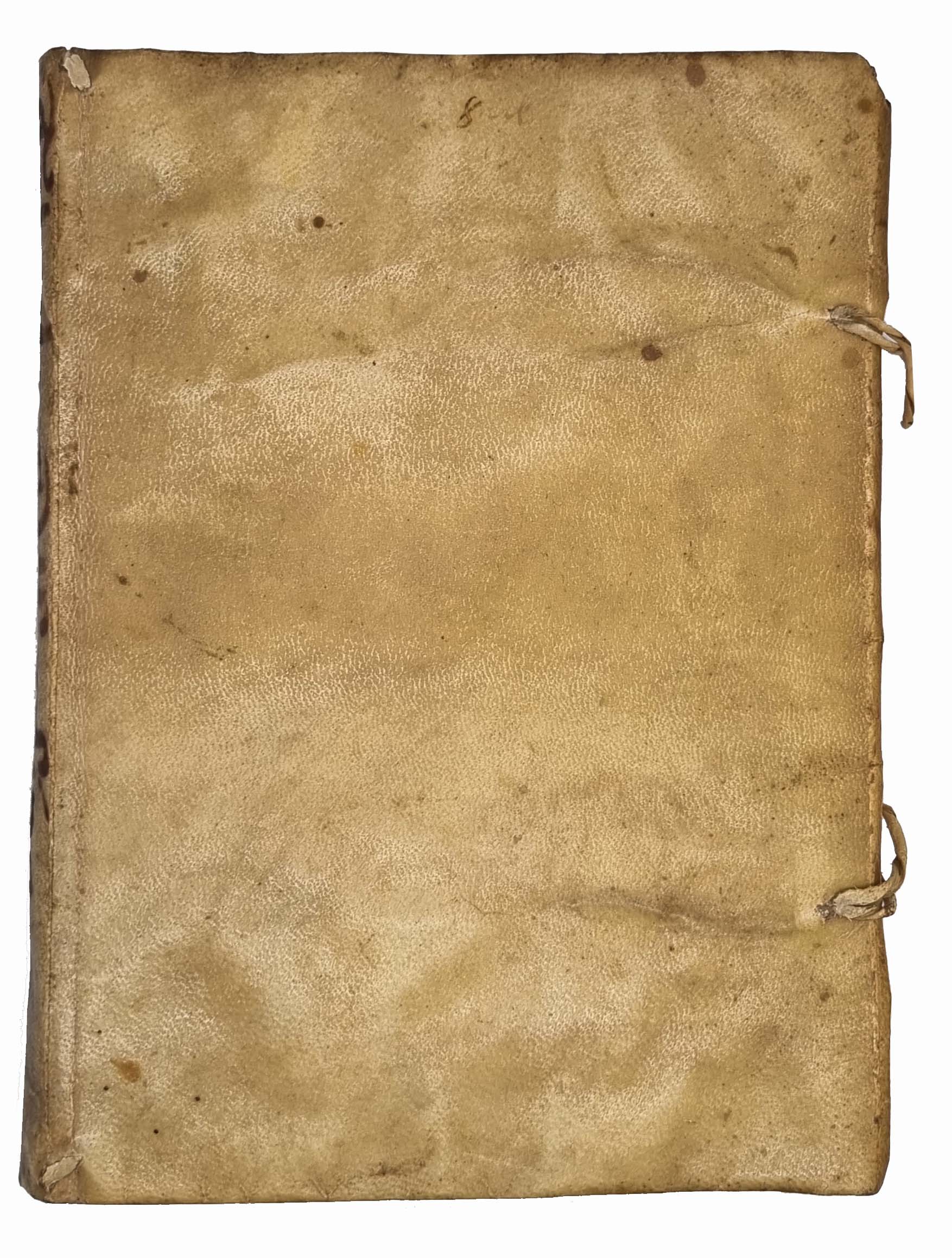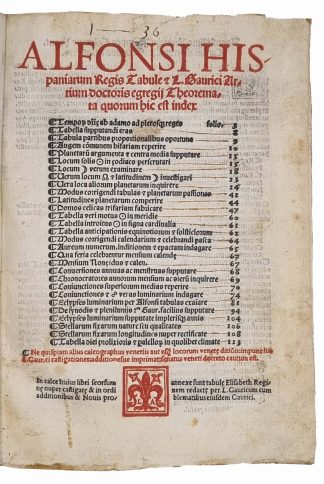ALFONSO X, King of Castile and Leon
Tabule & Theoremata quorum hic est index ... In calce huius libri seorsum annexe sunt tabulae Elisabeth Reginae nuper castigatae & in ordinem redactae per L. Gauricum ..
Venice, Lucantonio Giunta, 1524, November£4,950.00
FIRST EDITION thus. 4to. 2 parts in one. ff. 123, (i) 27, (i). A-P8, Q4, a-c8, d4. Roman letter. Title page in red and black, Giunta’s small fleur de lys device in red on first t-p, repeated in black on recto of last leaf of first part, and on second part title, small woodcut initials, woodcut tables throughout, two large circular woodcut diagrams depicting the solar cycle, contemporary detailed marginal annotations in places, armorial bookplate “Mannington Hall” (seat of Lord Walpole) surmounted by an earl’s crown with motto “Fari quae sentiat” on front paste-down. Light age yellowing, occasional light water stain, the odd mark or spot. A good copy, crisp and clean in contemporary limp vellum, pig skin ties and ball catches.
An attractive copy, beautifully printed by Lucantonio Giunta, of the work which underpins Alfonso X’s “lasting scientific fame” (DSB); the first edition with an additional table by the astronomer and mathematician Luca Gaurico, perhaps best known for the first published Latin translations of Archimedes’ works ‘De Mensura Circuli’ and ‘De Quadratura Parabolae’. Astrologer and mathematician, Luca Gaurico was appointed professor of mathematics at Ferrara, in 1531 where Scaliger was one of his pupils. Gaurico may have met Copernicus at Padua, as they were both at the university in the early years of the 16th century, and would have shared a common interest in Ptolemy and Archimedes.
Alfonso X (‘The Wise’, 1221 – 1284), was an enthusiastic sponsor of the translation of Arabic works, especially, astronomy, into Latin and Castilian. The commission of the present work was his most enduring achievement, it became known as the Tablas alfonsinas and was widely popular throughout the Middle Ages, the Spanish text from which it was translated having been lost. The tables were not widely known, however, until a Latin version was prepared in Paris in the 1320s. Copies rapidly spread throughout Europe, and for more than two centuries they were the best astronomical tables available.
First printed in 1483, the Alfonsine Tables were an important source of information for the young Nicolaus Copernicus before his own work superseded them in the 1550s. A theoretical text for astronomers, the tables were used to predict the motions of the planets and stars (cf. Kenney, no. 3). By following the rules of calculation, in principle the user could derive the positions of the planets for any given time or place.
Astronomical tables were also used to determine lunar phases, eclipses and calendrical information. Essentially, the work was a translation of the Toledan Tablets of the Cordoban astronomer al-Zarqali (Archazel, c. 1029 – c. 1087), with some new observations made in the years 1262-1272. It followed the general format of al-Zarqali’s earlier compilation and, with only minor qualifications, retained the Ptolemaic system for explaining celestial motion.
The first printed edition was Ratdolt’s in Venice, in 1483, and there were nine subsequent editions (the last one in 1649). The Alphonsine Tables, as they became known, were a standard work of reference for astronomers, cosmographers, astrologers and navigators for nearly five hundred years.
A very good unsophisticated copy.
Not in BMC STC It. C16th. Brunet I, p.199. Cantamessa I p. 77. Graesse I 86. Houzeau & Lancaster 12487.In stock


